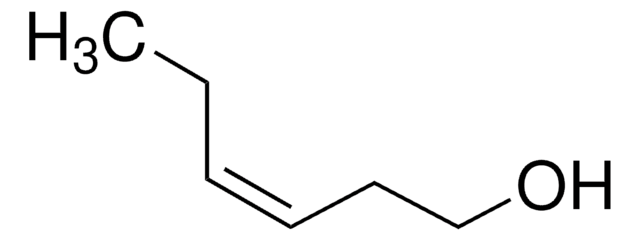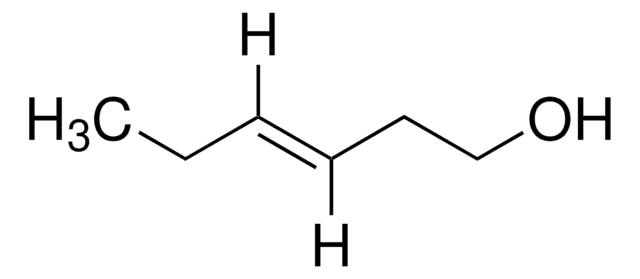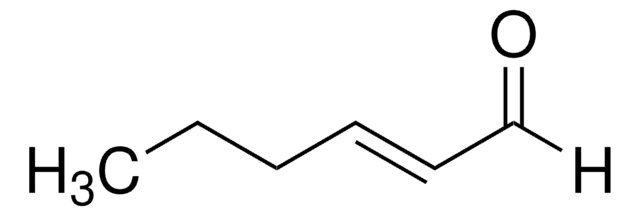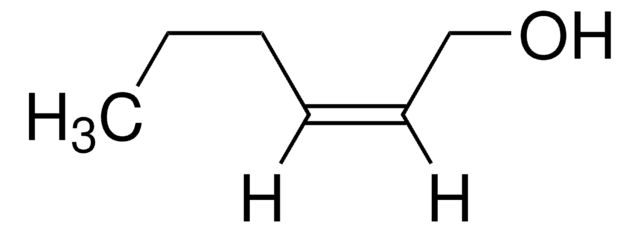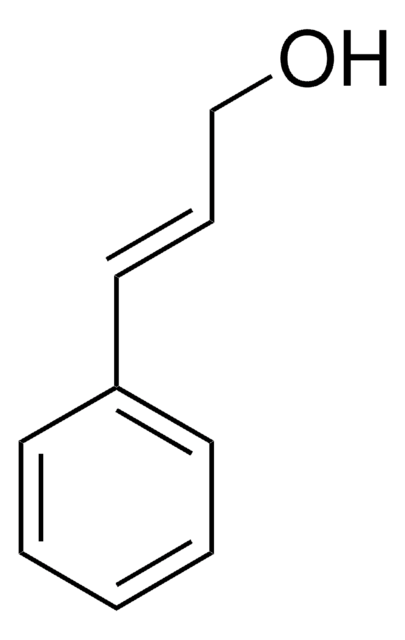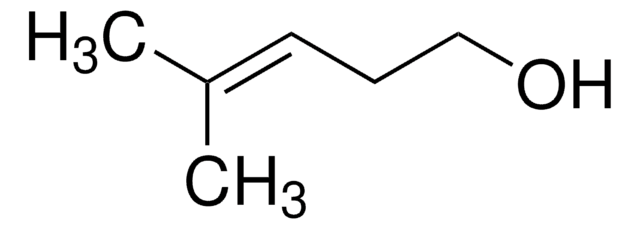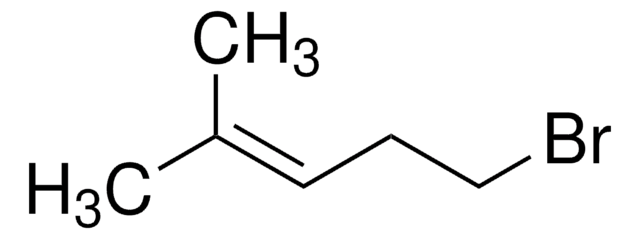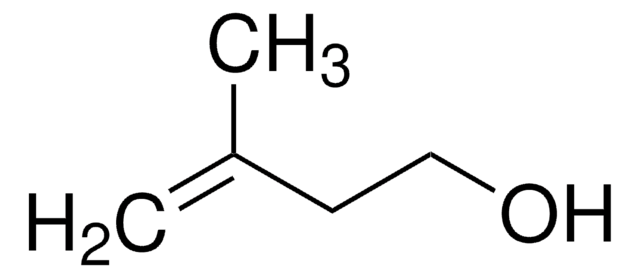224715
trans-3-Hexen-1-ol
97%
Sinônimo(s):
trans-3-Hexenol
About This Item
Produtos recomendados
Nível de qualidade
Ensaio
97%
índice de refração
n20/D 1.439 (lit.)
p.e.
61-62 °C/12 mmHg (lit.)
densidade
0.817 g/mL at 25 °C (lit.)
grupo funcional
hydroxyl
cadeia de caracteres SMILES
[H]\C(CC)=C(\[H])CCO
InChI
1S/C6H12O/c1-2-3-4-5-6-7/h3-4,7H,2,5-6H2,1H3/b4-3+
chave InChI
UFLHIIWVXFIJGU-ONEGZZNKSA-N
Procurando produtos similares? Visita Guia de comparação de produtos
Categorias relacionadas
Descrição geral
Palavra indicadora
Warning
Frases de perigo
Declarações de precaução
Classificações de perigo
Eye Irrit. 2 - Flam. Liq. 3
Código de classe de armazenamento
3 - Flammable liquids
Classe de risco de água (WGK)
WGK 3
Ponto de fulgor (°F)
138.2 °F - closed cup
Ponto de fulgor (°C)
59 °C - closed cup
Equipamento de proteção individual
Eyeshields, Gloves, type ABEK (EN14387) respirator filter
Escolha uma das versões mais recentes:
Já possui este produto?
Encontre a documentação dos produtos que você adquiriu recentemente na biblioteca de documentos.
Os clientes também visualizaram
Global Trade Item Number
| SKU | GTIN |
|---|---|
| 224715-1G | |
| 224715-25G | 4061837323379 |
| 224715-5G | 4061838779175 |
Nossa equipe de cientistas tem experiência em todas as áreas de pesquisa, incluindo Life Sciences, ciência de materiais, síntese química, cromatografia, química analítica e muitas outras.
Entre em contato com a assistência técnica